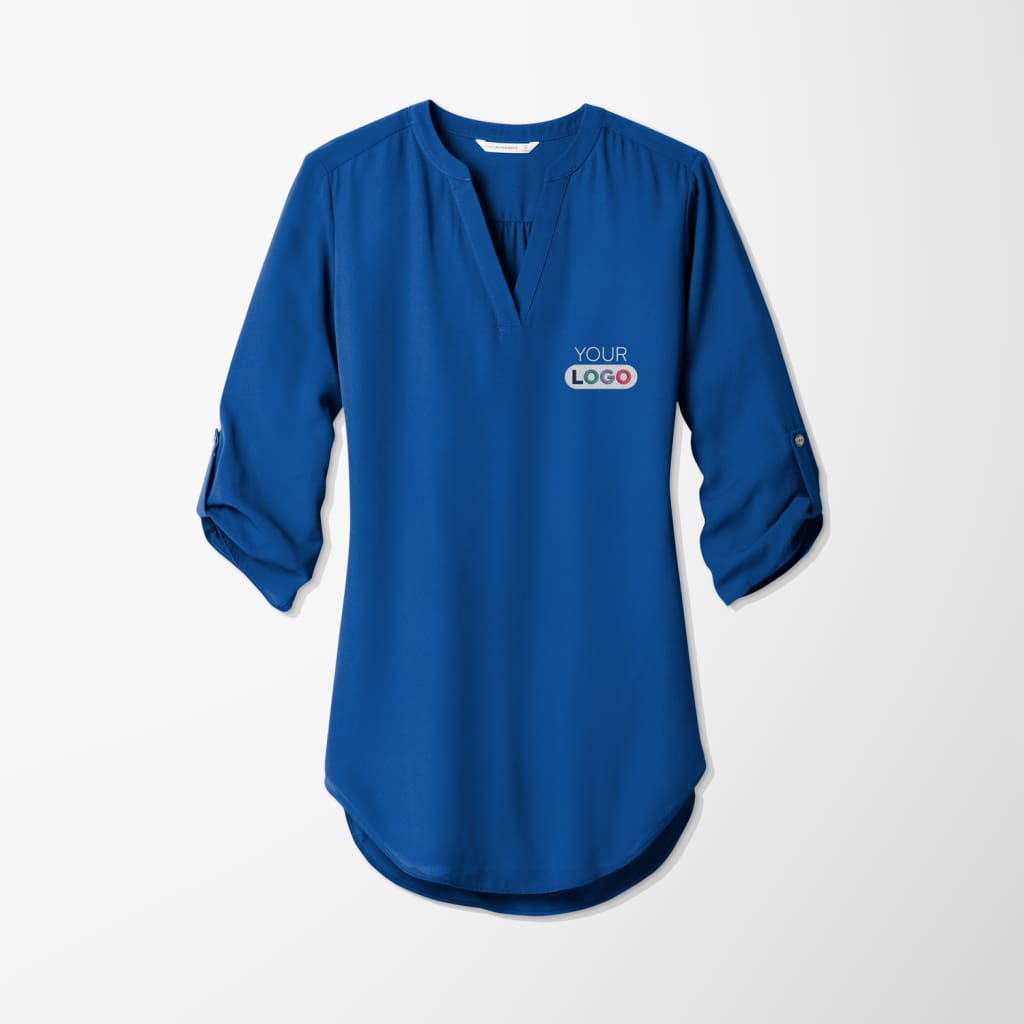The Relevance of Sustainable Garments: Exactly How It Influences the Setting and Your Closet
Lasting apparel is progressively recognized for its vital duty in lessening the ecological impact of the fast fashion sector. By focusing on eco-friendly products and moral manufacturing approaches, it resolves pressing eco-friendly issues. This change not only benefits the world however additionally affects customer selections, leading to a much more thoughtful method to wardrobe administration. Understanding these dynamics elevates crucial concerns concerning style's future and individual responsibility in shaping it.
The Environmental Impact of Rapid Fashion

Advantages of Sustainable Products
Sustainable products offer considerable benefits, especially via environmentally friendly textile choices that lessen environmental injury. These products likewise show durability and durability, lowering the requirement for constant substitutes. Consequently, they contribute to a more lasting style market and promote responsible customer habits.
Eco-Friendly Fabric Selections
While the style sector has long been related to rapid patterns and ecological damage, the rise of green textile choices provides a transformative opportunity. Sustainable products such as organic cotton, hemp, and Tencel have actually obtained popularity as a result of their lower ecological influence. These materials are commonly produced without unsafe pesticides and call for much less water, decreasing their carbon impact - Branded Clothing. Furthermore, lots of environment-friendly fabrics are biodegradable, adding to a round economic situation by lessening waste. Selecting lasting products not only supports environmentally liable methods yet additionally advertises much healthier ecosystems. As customers become more familiar with their purchasing power, the demand for eco-friendly materials urges brands to innovate and embrace even more sustainable production techniques, inevitably profiting the planet and future generations
Longevity and Longevity Benefits
Numerous consumers are significantly recognizing the sturdiness and long life advantages of lasting products in their clothing choices. Unlike traditional textiles, lasting products such as organic cotton, hemp, and recycled polyester are engineered to stand up to deterioration, causing garments that last much longer. This decreased frequency of replacement not only conserves consumers money over time but likewise decreases waste produced by rapid style. Additionally, sustainable clothes often uses eco-friendly manufacturing approaches that improve fabric toughness, adding to a reduction in the overall carbon impact. By purchasing durable clothes, customers can grow a more sustainable closet while enjoying premium pieces that keep their visual and capability in time. Sturdiness and longevity stand as vital benefits of picking sustainable products.
Minimizing Waste With Lasting Practices
Minimizing waste in the apparel industry can be accomplished with cutting-edge techniques such as upcycling and repurposing materials. In addition, embracing minimal wardrobe strategies urges customers to focus on high quality over amount, ultimately reducing clothing usage. Together, these strategies contribute significantly to a more lasting clothing design.
Upcycling and Repurposing Products
Upcycling and repurposing materials have arised as ingenious approaches in the fashion business, changing thrown out textiles into important new products. This strategy not only lessens waste but likewise encourages imagination and originality in clothes style. By taking old garments and products, developers can create special pieces that mirror personal style while minimizing the need for brand-new resources. Additionally, upcycling often needs much less power and water contrasted to typical production procedures, significantly lowering the ecological impact of style. As customers become a lot more knowledgeable about sustainability, the appeal of upcycled apparel remains to increase, promoting a circular economic climate. Eventually, these methods contribute to a more sustainable future, where style focuses on ecological health and wellness over quick production and consumption.

Minimal Closet Strategies
As individuals significantly look for to lessen their environmental influence, adopting minimal closet methods has gained traction as an effective strategy to lasting style. These methods highlight high quality over quantity, encouraging customers to curate a smaller sized collection of functional, long lasting garments. By focusing on timeless items that can be combined and matched, individuals can lower the frequency of acquisitions and ultimately decrease waste.Additionally, minimalism advertises conscious consumption, prompting buyers to review the ecological and ethical implications of their choices. This strategy not only fosters an extra sustainable way of living however likewise streamlines everyday decision-making concerning outfit. As individuals accept minimal principles, they add to a fashion society that values sustainability and accountable consumerism, eventually resulting in an extra eco-conscious society.
The Role of Honest Labor in Sustainable Style
While lots of consumers are significantly knowledgeable about the ecological repercussions of their apparel options, the significance of honest labor techniques in sustainable fashion can not be overlooked. Honest labor includes reasonable salaries, safe working problems, and regard for workers' civil liberties, developing the foundation of responsible fashion manufacturing. Brands that focus on ethical labor not just boost communities however additionally set a requirement for accountability in the industry.Moreover, the assimilation of honest methods promotes openness, making it possible for consumers to make educated selections concerning their acquisitions. This practice contrasts sharply with fast style's unscrupulous labor models, which commonly focus on revenue over individuals. By sustaining firms devoted to moral labor, consumers add to a system that values human self-respect along with environmental sustainability. Subsequently, honest labor is not merely an add-on; it is vital to the wider objective of sustainable fashion, making sure that the pursuit for eco-friendliness does not come with the expenditure of civils rights.
The Influence of Sustainable Clothes on Carbon Emissions
Sustainable apparel has the prospective to considerably decrease carbon emissions related to the fashion business. Traditional garment manufacturing adds especially to greenhouse gas discharges, mainly because of energy-intensive manufacturing procedures and making use of non-renewable resources. In comparison, lasting fashion concentrates on green products, such as organic cotton or recycled fibers, which typically require much less energy to produce.Moreover, sustainable brands often tend to embrace extra effective manufacturing techniques, lessening waste and lowering total emissions. By focusing on resilience and classic style, lasting clothing urges consumers to acquire less often, further minimizing the carbon footprint connected with overconsumption.Additionally, several sustainable brands are devoted to transparency in their supply chains, making it possible for consumers to make enlightened choices that line up with their worths. Ultimately, moving in the direction of sustainable clothes can result in a pop over to these guys considerable reduction in carbon discharges, adding to a healthier planet and a much more lasting future for the apparel industry.
Sustaining Neighborhood Economic Climates With Sustainable Options
The change toward sustainable garments not only addresses environmental worries however likewise considerably benefits regional economies. By choosing sustainable style, customers typically sustain small companies and neighborhood craftsmens, boosting community resilience. These enterprises generally operate a smaller scale, prioritizing workmanship and honest methods over mass production.Investing in locally made sustainable apparel cultivates work development and stimulates financial growth within areas. As customers end up being much more mindful of the environmental influence of their acquisitions, they significantly look for items that mirror their worths. This need urges regional makers to embrace sustainable practices, adding to a round economy.Moreover, sustaining regional services minimizes transportation emissions, aligning with eco-conscious customer habits. The interconnectedness of sustainable apparel and neighborhood economies emphasizes the essential duty that private choices play in advertising both environmental and economic wellness. By promoting these neighborhood connections, neighborhoods can thrive while also functioning in the direction of a more lasting future.
Transforming Your Wardrobe: Tips for a Sustainable Wardrobe
As individuals look for to minimize their environmental influence, transforming a closet right into a lasting wardrobe comes to be an essential action. One effective method is to assess existing clothes, maintaining only products that are worn regularly which line up with sustainability goals. Prioritizing high quality over amount is important; buying resilient items from environmentally friendly brand names can significantly lower waste.Additionally, incorporating pre-owned items can take a breath new life right into a closet while reducing ecological damages. Organizing clothing swaps with good friends or giving away unused items can additionally promote sustainability.When buying, people should seek products that are organic, recycled, or naturally degradable, and avoid quick style retailers - Branded Clothing. Ultimately, practicing conscious intake by thoughtfully thinking about each my response acquisition can add to a more lasting way of living. By carrying out these tips, one can produce a closet that shows individual design while sustaining environmental stewardship
Frequently Asked Concerns
Just How Can I Recognize Lasting Clothing Brands?
To identify sustainable clothing brands, one should research materials used, check for certifications like Fair Profession, and check out the brand name's transparency concerning their manufacturing procedures, labor practices, and environmental effect, guaranteeing honest and environment-friendly techniques are prioritized.
What Are the Expenses Associated With Sustainable Style?
The prices linked with sustainable fashion can differ significantly. Higher production costs, ethical sourcing, and environmentally friendly products often lead to raised market prices, which may hinder some customers while appealing to eco conscious shoppers.
Can Lasting Clothes Be Trendy and fashionable?
Sustainable clothing can without a doubt be stylish and stylish. Developers increasingly prioritize ingenious materials and honest manufacturing techniques, proving that fashion and sustainability can exist side-by-side. Consumers currently have diverse choices that mix aesthetics with environmental awareness.
How Does Laundering Clothes Affect Their Sustainability?
Washing garments significantly influences sustainability by consuming water and energy, contributing to air pollution, and causing microplastic release. Constant washing can break down textiles, shortening their life expectancy and increasing the requirement for substitutes, ultimately worsening ecological concerns.
What Is the Life-span of Sustainable Apparel Compared to Rapid Fashion?
The lifespan of sustainable clothes commonly goes beyond that of fast fashion products, usually lasting several years because of high quality products and workmanship. In comparison, fast style garments might degrade quickly, requiring even more constant substitutes. Sustainable clothes is progressively identified for its crucial duty in lessening the environmental effect of the rapid style sector. While many consumers are progressively conscious of the ecological effects of their apparel choices, the importance of honest labor methods in lasting style can not be forgotten. Branded Clothing. Lasting clothing has the potential to considerably minimize carbon exhausts connected with the fashion industry. In contrast, lasting style focuses on environment-friendly products, such as natural cotton or recycled fibers, which usually call for much less power to produce.Moreover, sustainable brand names have a tendency to embrace more reliable manufacturing techniques, you could try these out reducing waste and lowering overall emissions. By prioritizing sturdiness and ageless style, lasting garments encourages customers to acquire less regularly, more minimizing the carbon footprint connected with overconsumption.Additionally, many sustainable brands are devoted to openness in their supply chains, allowing consumers to make enlightened options that straighten with their values